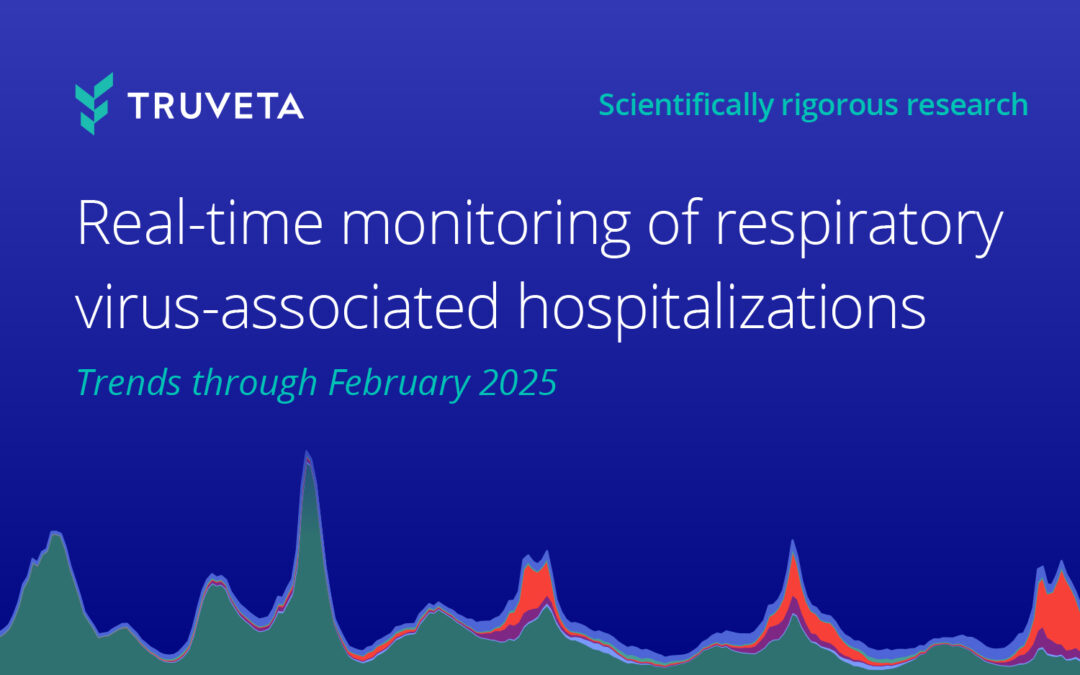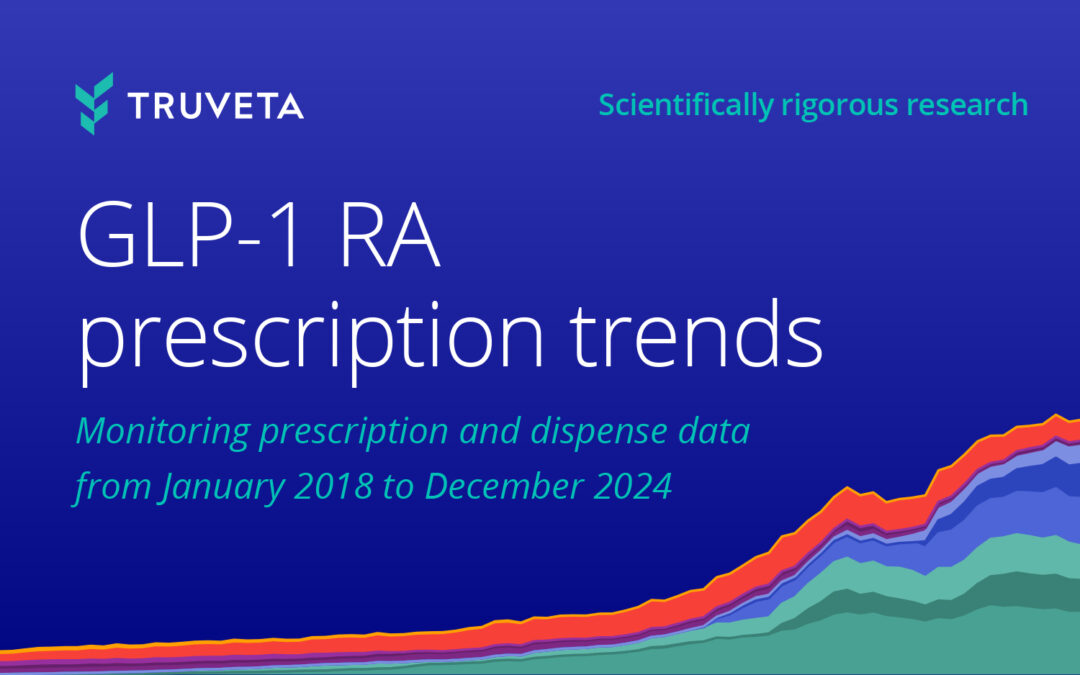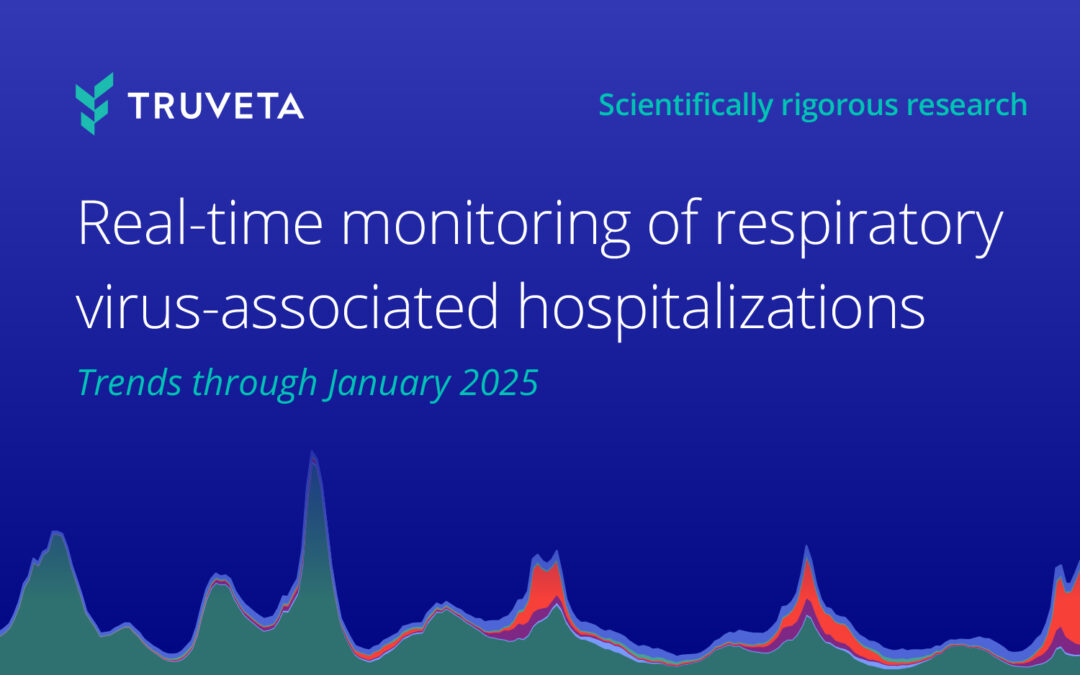- RSV-associated hospitalizations increased 191.5% throughout October 2024.
- RSV-associated hospitalizations also increased in vulnerable populations with a 233.3% in infants and young children (aged 0-4) and 137.0% increase in older adults (65+); 2.4% of all hospitalizations for infants and children are associated were associated with RSV in the last week of October.
- Overall, the rate of hospitalizations associated with respiratory viruses decreased throughout October 2024. Test positivity rates for respiratory viruses declined by 10.6%; however, RSV positivity rose by 189.6%.
Respiratory viruses, including COVID-19, influenza, and respiratory syncytial virus (RSV), continue to contribute to hospitalizations across the United States. Vulnerable populations, such as infants, children, and older adults, are particularly at risk of severe outcomes. Few sources regularly monitor hospitalizations associated with respiratory viruses. Truveta Research has created a respiratory virus monitoring report to supplement the surveillance data provided by the CDC by describing weekly trends in the rate of hospitalizations overall and for each of the six most common respiratory viruses: COVID-19, influenza, human metapneumovirus (HMPV), parainfluenza virus, RSV, and rhinovirus. This information can inform decisions about public health, clinical care, and public policy.
Because Truveta Data provides the most complete, timely, and clean de-identified EHR data, including full patient medical records, notes, and images, linked with claims, SDOH, and mortality data for more than 120 million patients across the US, we can show the latest trends in these respiratory virus-associated hospitalizations, including valuable insight into two at-risk populations: infants and children (age 0-4 years old) and older adults (age 65 and over).
This blog provides a snapshot of the key findings with data through November 3, 2024, in the report specific to the overall population across all respiratory viruses, as well as for two high-risk populations: infants and children (age 0-4 years old) and older adults (age 65 and older). For the full analysis – inclusive of demographics, comorbidities, and overall trends in virus-associated hospitalizations across all age groups for each virus – see the complete monitoring report with data through October 2024 on MedRxiv.
Key findings: Trends in respiratory virus-associated hospitalizations
Using a subset of Truveta Data, we identified 744,168 hospitalizations of 688,099 unique patients who tested positive for a respiratory virus between October 01, 2019, and November 3, 2024.
Overall hospitalization rates fell, but RSV is on the rise
The overall rate of respiratory virus-associated hospitalizations decreased throughout October 2024. There was an 18.7% reduction in the rate of hospitalizations from the last week in September to the last week of October, with COVID-associated hospitalizations showing the most substantial decrease (-39.3%). RSV, influenza, and HMPV hospitalizations all substantially increased, led by RSV which was up 191.5%.
Test positivity for respiratory viruses declined by 10.6%, though RSV positivity rose by 189.6%. COVID test positivity experienced the greatest drop (-36.2%), and while slightly down (-7.1%), rhinovirus remained the virus with the highest test positivity.
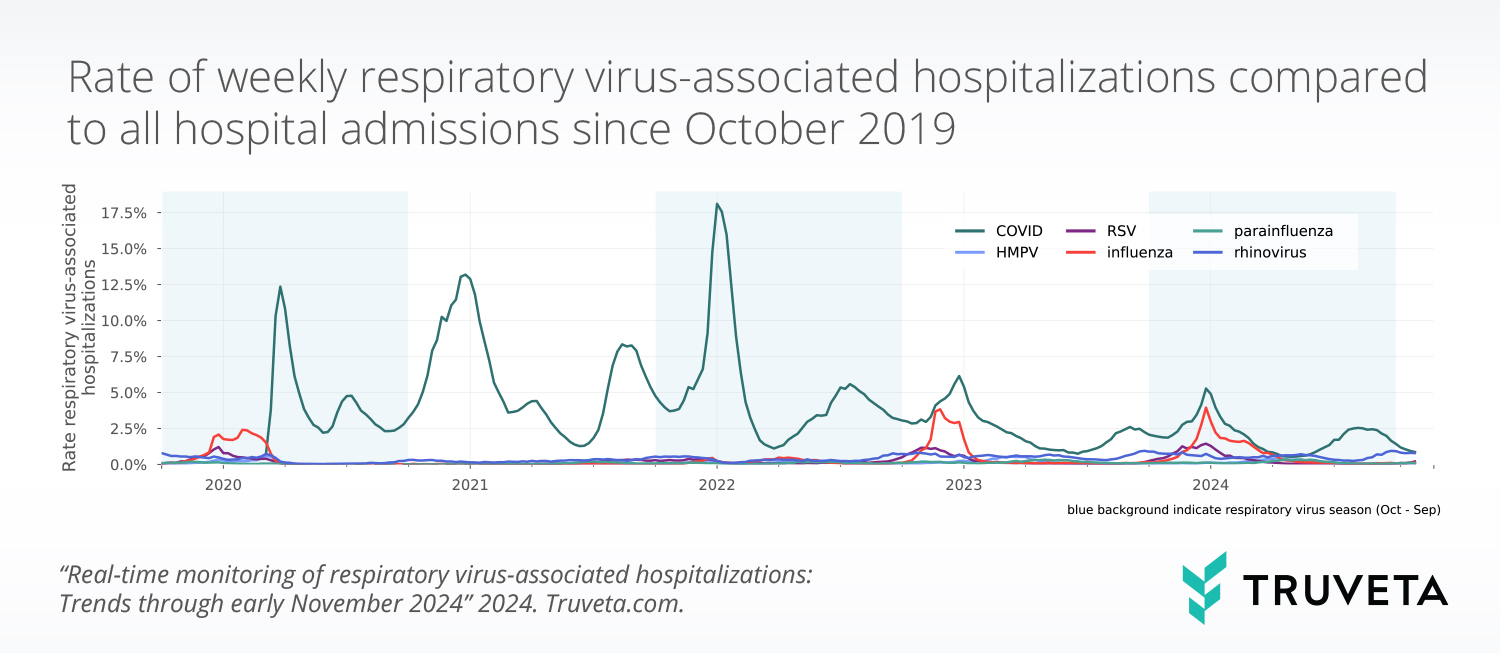


Hospitalizations increased for infants and children (age 0-4)
For infants and children, respiratory virus-associated hospitalizations increased by 21.6% throughout October, reflecting the heightened circulation of RSV and other viruses. Notably, RSV hospitalizations in this population surged (+233.3%), accounting for 2.4% of all hospitalizations for this age group. In late October, 5.1% of all hospitalizations in this population were associated with a respiratory virus.
RSV test positivity for infants and children jumped by 147.1%, highlighting the need for close surveillance, as increased test positivity may precede a seasonal peak for RSV.
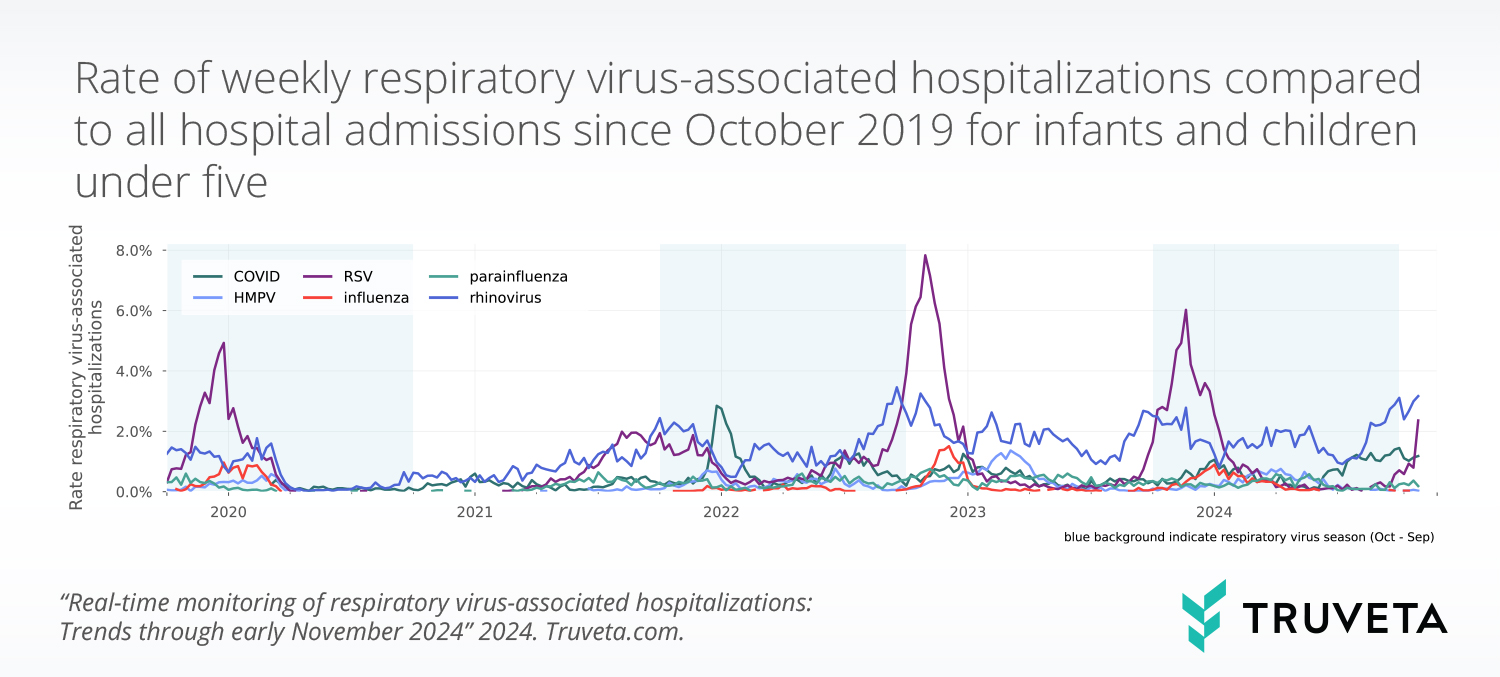
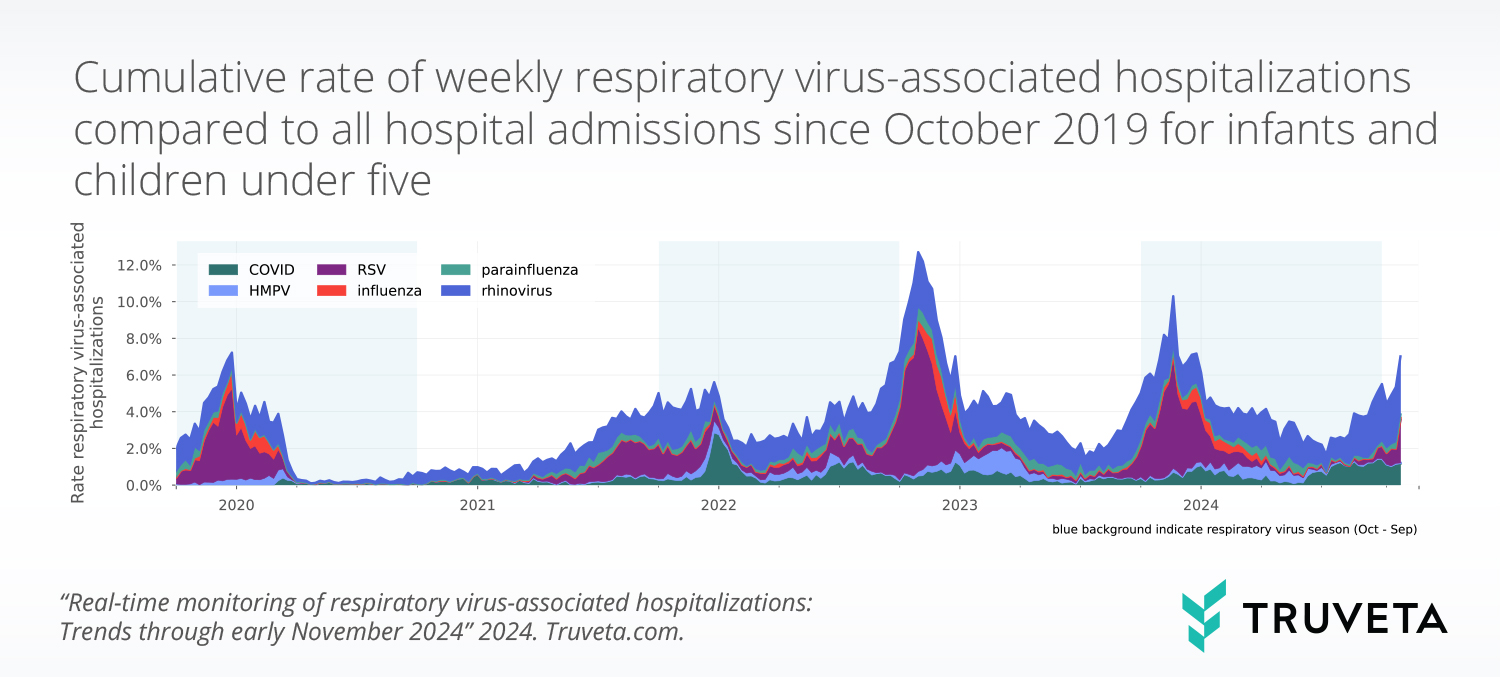

RSV’s impact on older adults grew
The population aged 65 and over saw a decrease of 26.8% in hospitalizations associated with respiratory viruses throughout October 2024, led by a decrease in COVID-associated hospitalizations (-40.9%).
However, RSV-associated hospitalizations among older adults were up 137.0% throughout the month, although the overall rates remained low (0.1% of all hospitalizations in this age group were associated with RSV). By late October, respiratory virus-associated hospitalizations accounted for 2.0% of all hospitalizations in this age group.
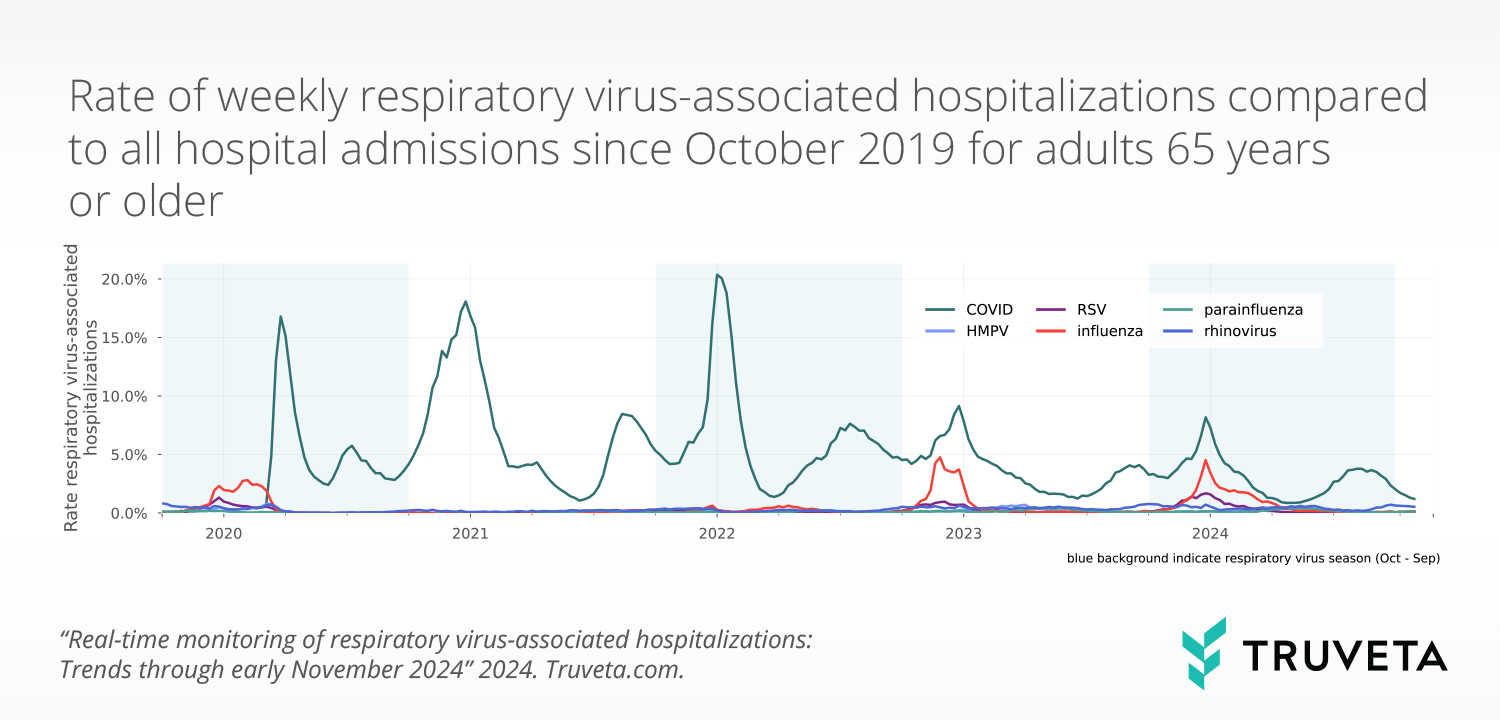
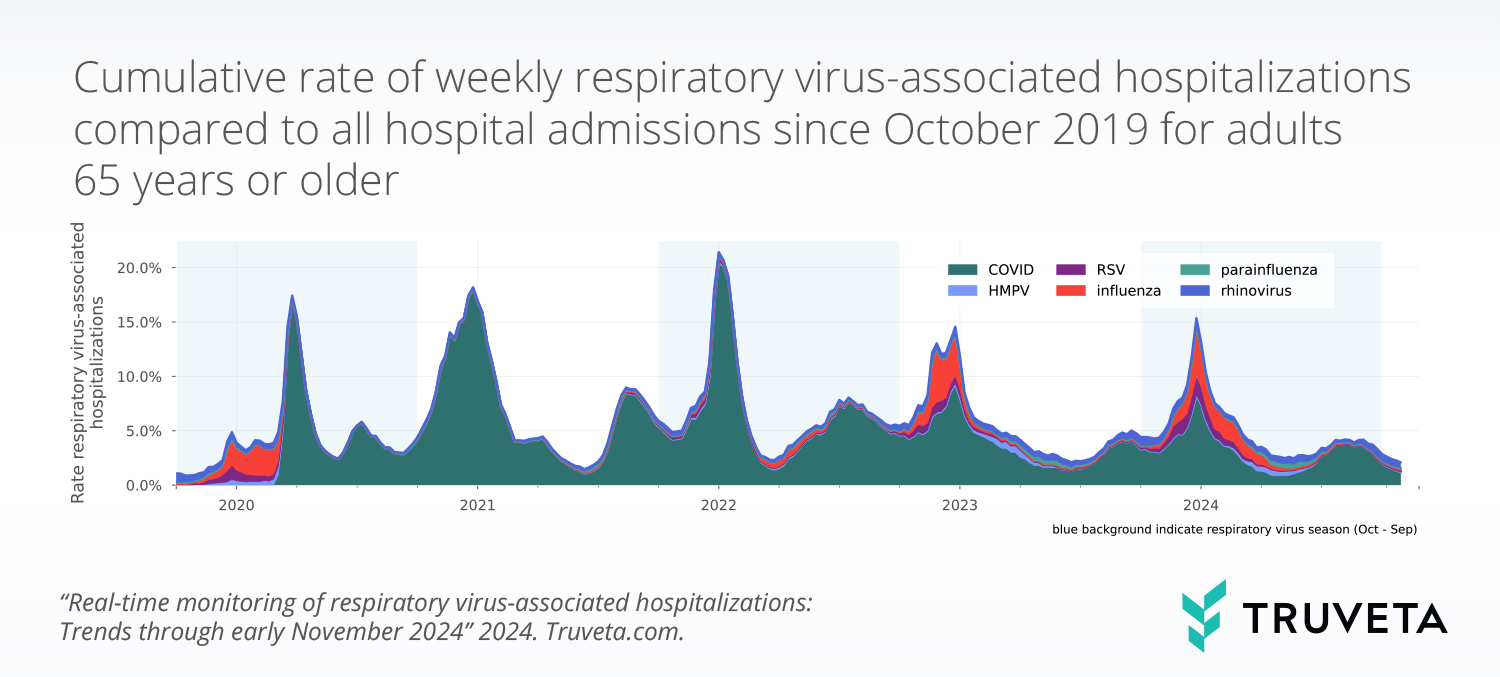

Discussion
RSV, a leading cause of respiratory disease in young children, has shown a dramatic uptick in this age group across both hospitalizations and test positivity.
It is important for public health experts and clinical providers to understand the trends in these infections to inform decisions about public health, clinical care, and public policy. Connecting population-level trends with granular clinical information available in Truveta Studio can be very useful to understand which populations are most impacted and may require additional support.
We will continue to monitor respiratory virus-associated hospitalization overall and for at-risk populations throughout this 2024-2025 respiratory virus season (October 2024 through September 2025).
View previous monitoring reports
Learn more about how Truveta Data supports timely disease monitoring – contact us for a demo



